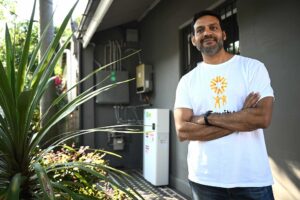Introduction: Even in the absence of a carbon price, several simple, affordable policies could drive the transformation of the large-scale electricity supply system from one that’s dominated by fossil fuels to one dominated by, clean, safe, everlasting, affordable renewable energy – given the political will.
The most urgent policies involve supporting dispatchable renewables and other forms of storage, building or upgrading a few key transmission links, two changes to market rules, and implementing an industry-funded scheme for retiring the most polluting coal-fired power stations.
The details are set out in the Discussion Paperjust published by the Australia Institute. Here is a summary.
Most Australians are concerned about climate change (73%) and agree that the government needs to implement a plan to ensure the orderly closure of old coal plants and their replacement with clean energy (70%) within the next 20 years (67%). [1]
Furthermore, an overwhelming majority (84%)of Australians supports the statement that “the government should focus on renewables, even if this means we may need to invest more in infrastructure to make the system more reliable”. The recent Wentworth by-election confirmed the public attitudes for the case of a formerly safe Liberal seat.
In Australia, neither major political party at the federal level is implementing the will of the majority of citizens on energy policy. The Liberal National Coalition (LNC) government continues to promote coal.
Its former national target for renewable energy (26%) was so weak that it could be reached without federal intervention as the result of the positive policies in several states and territories and local governments, and purchases of renewable energy (RE) by the industrial, commercial and household sectors.
It has no other policies capable of driving a transition to a predominantly RE future and still has legislation, stalled in the Senate, to undermine existing policies, namely to close the Australian Renewable Energy Agency (ARENA) and the Clean Energy Finance Corporation (CEFC).
The Australian Labor Party (ALP) Federal Opposition has an easily achievable renewable electricity target for 2030 (50%), several worthwhile minor policies supporting renewable energy, but no support for its target from Renewable Energy Certificates between 2020 and 2030, and no other policy capable of driving its target or a stronger one.
Vested interests appear to be still determining the policies, or lack thereof, of both major parties, particularly in the federal sphere.
Therefore, the community must make RE an important election issue nationwide, correct public misconceptions about energy policy and renewable energy being disseminated by opponents, and put increasing pressure on recalcitrant governments to act. If they don’t comply with the will of the majority, these governments must be voted out of office.
In particular, the federal Coalition, New South Wales Coalition and Western Australian ALP governments must set realistic RE targets (they have none) and follow the lead of the ACT, Victoria and Queensland by implementing reverse auctions with contracts-for-difference to achieve their targets.
Electricity is the focus of this article, because it’s the easiest form of energy supply to transition and so almost all energy used in a future ecological sustainable energy system will be produced directly or indirectly from renewable electricity (RE).
Because emissions from agriculture, non-energy industry and air and sea transport are more difficult to cut rapidly, electricity will have to contribute a much greater share of emission reductions, transitioning to zero emissions by 2030 or soon afterwards.
Since the present Federal Government is unwilling to budge on climate and energy policy, we outline the key policies recommended for the next Federal Government.
Dispatchable renewables
Electricity from new variable renewable electricity (VRE) sources, wind and solar PV farms, is now much cheaper than from new fossil fuelled (FF) power stations.
Therefore, the unguided market will implement these technologies preferably above all others. The problem is that an electricity supply system cannot be composed of only VRE. To maintain reliability and security of supply, it needs a contribution from supply that’s dispatchable, i.e. can supply power on demand at short notice.
The last thing it needs is inflexible, slow-response, coal-fired power stations; instead it needs (together with demand response) flexible, dispatchable renewables and/or other forms of storage.
These include pumped hydro, concentrated solar thermal with thermal storage, batteries charged with excess VRE and open-cycle gas turbines operating on fuels produced from excess VRE (e.g. hydrogen and ammonia).
However, the market for most of these technologies is just beginning to grow, they will only operate for short periods of time, and so their electricity is more expensive than from VRE.
With time being the essence, government policies are needed to accelerate their growth and hence reduce their costs. Therefore, we recommend that a future Federal Government provide an additional tranche of funding, (say) $4 billion over four years, for ARENA grants specifically for dispatchable renewable electricity, other forms of storage and demand response.
This tranche should be additional to any ARENA funding allocated to Snowy 2.0. Current ALP policy commits to a specific additional $207M over four years for CST. Although this is a positive gesture, it is not sufficient to obtain reliable mixof variable and dispatchable renewable energy sources.
A future Federal Government should also provide an additional tranche of funding of $2 billion over four years for CEFC loans specifically to dispatchable renewable electricity and other forms of storage.
Phase out the most polluting coal stations
The anticipated rapid growth of RE must be matched with the retirement of coal-fired power stations. To assist this transition, the policy suggested by the ANU Centre for Climate Economics & Policycould be adopted.
Plants bid the payment they require for closure and the regulator chooses the most cost-effective bid. The plants remaining in operation then make financial transfers to the plant that exits, in line with their emissions, under government regulation.
Building key transmission links
The construction of key transmission lines must commence as soon as possible, because they take longer to plan and build than the rapidly growing wind and solar farms.
The Integrated System Plan (ISP) of the Australian Energy Market Operator (AEMO)covers most of the needs, but even its ‘Fast Change’ scenario, is too slow. Planning and constructing the following links should commence immediately:
- Upgrade NSW-Qld and connections in northern NSW;
- Build a new SA-NSW link;
- Upgrade lines in western and north-western Vic.
Simple rule changes to National Electricity Market
Following community and industry pressure, the settlement period for spot prices in the NEM will be changed from 30 minutes to the dispatch period of 5 minutes on 1 July 2021. Since this change will help to reward flexible, fast response, dispatchable, power plants and help reduce electricity prices, it should be brought forward to 1 July 2019.
Batteries should be rewarded for their very rapid response time (tens of milliseconds). The value of batteries for frequency control and ancillary services (FCAS) has already been demonstrated by the Hornsdale Power Reserve.
More complex barriers to 100% renewables
Implementing the simple policies listed above will accelerate the transition and take Australia a long way on the path towards 100% RE. But the market was not designed for such a system, despite all the talk about it being ‘technology neutral’. The main problem will arise from the Merit Order Effect.
The growth in renewable electricity generation with almost zero operating cost will reduce the operating times of FF power stations and bring down the wholesale price of electricity, forcing FF power stations into retirement. No doubt this effect helped to force the retirement of SA’s two coal-fired power stations. Excellent, so far!
But, as the growth of RE continues and the wholesale price continues to decline, spot prices (and contract prices influenced by spot prices) will no longer be sufficient to fund the capital costs of new generation of any type, including renewable energy, or even to fund loan repayments on existing solar and wind farms.
Either a new design will be needed for the electricity market or a non-market system will be needed. This non-trivial problem, and four possible solutions suggested by others, are discussed in the Discussion Paper.
Conclusion
The community wants renewable energy and climate science shows that the transition must be rapid. There are no major technical or economic barriers to the transition. The next Federal Government must implement the proposed policies and the recalcitrant state governments must follow the lead of the ACT, South Australia, Victoria and Queensland.
[1]Ebony Bennett 2018. Climate of the Nation 2018. Tracking Australia’s attitudes towards climate change and energy. Canberra: The Australia Institute.
Mark Diesendorf is associate professor at the University of NSW. The full report written for The Australia Institute can be accessed here.









